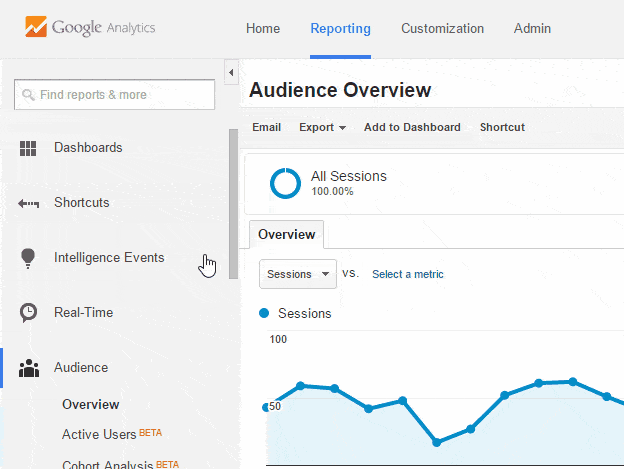What should you blog about? Forget Asking a Magic 8 Ball, Google Analytics Can Tell You

Who shot J.R.? Why is the sky blue? How did cats come to rule the Internet? These are all questions that you can get answers to. You also already have the answer to that persisting question “What should I blog about this week?” The answer, my friends, is blowing in the wind. Okay, it’s not, it is right there in your Google Analytics.
Google Analytics is a Magic 8 Ball?
Yes, that’s right, that thing you set up when you started your website and haven’t bothered to look at since. Long ignored by you as you whined about why people aren’t buying your stuff and how you don’t have any ideas about what to blog about. Google Analytics has been silently and patiently gathering data that will give you all the answers you seek, you simply have to use it.
“But Audience, Cohort, Acquisition, Page Views, Sessions, Users… who understands all this jibberish!?!” you cry. Okay, fine – the terminology can be a little intimidating. But just like anything, once you start to use it, you’ll get the hang of it. You’re good enough, smart enough, and doggone it, people like you. Plus, I’m here to help.
Let’s tackle blog post ideas first
The point of writing blog posts is to share your expertise with the world, add value, build an audience, grow your empire and take over the world! [insert maniacal laugh] Well, maybe just the first few. At any rate, you don’t want to waste time creating blogs no one reads.
This is where Google Analytics has the answers you need. You can see what visitors to your site like, and write more about that. Here’s how…
What are visitors to your site looking at?
The easiest place to start is to go look at your most viewed pages. To get there, log into Google Analytics, scroll down to Behavior in the left-hand pane and click it, then click Site Content and finally All Pages.

Here’s how you see your most viewed pages.
Tah-dah! You’re looking at the list of most viewed pages on your site for the last 30 days (unless you changed the default date range before you got here). This is a great place to start to see what people coming to your site are interested in. If your top 3 pages (besides your home page) all have to do with the resurgence of 80’s toys, then you might consider writing more about that.
See if you find any trends. Play around with the date ranges to look for seasonality, previously popular posts, etc. You can also sort by the “Duration” column to see what pages people hung around on the longest. Be careful with this metric, in addition to duration, make sure you factor in the number of people that came to that page. But it can be a helpful additional data point.
Who are your visitors?
Now you know you know what your visitors are looking at. The next step is to make sure they are “your people.” Your posts on the growing popularity of 80’s toys be the top draw on your site, but if the people you are trying to talk to aren’t the ones looking at them, you may reconsider continuing to write on that topic.
One caviat, you would have had to set up Google Analytics specifically to track demographics in order to get the next set of info. If you didn’t, you won’t be able to use this yet. Now don’t you worry your pretty little head, you can turn it on now and use it next time. Google even tells you exactly how.
To get some insights about who is coming to your website, go to Audience > Demographics and Audience > Interests. You’ll be looking for general alignment with your target audience. Be sure to note if there are any interests that also might be worth blogging about.
Where does this information about the people visiting your site come from? Per Google:
Demographics and Interests data comes from the third-party DoubleClick cookie (for web traffic) and from anonymous identifiers for mobile apps (i.e., Advertising ID for Android and IDFA for iOS). Neither analytics.js nor ga.js collects Demographics and Interests data.
Basically, Google is generously sharing some of the information they are collecting with you. You’ll see that if your traffic isn’t sizeable enough, you may not get data in here right away. Google applies thresholds so that the demographics and interests of individual users can’t be inferred. If you aren’t seeing this info yet, don’t worry. Just keep growing your site traffic and check back.
No More Excuses
Alrighty. Now you’ve got some actual data to guide you. Look it over and then start your list of categories, sub-categories and topics for all those fabulous blog articles you’re going to write.
Want to do even more with Google Analytics? I’ve created a 5-video training to help you find all that gold currently waiting for you in your Google Analytics.

